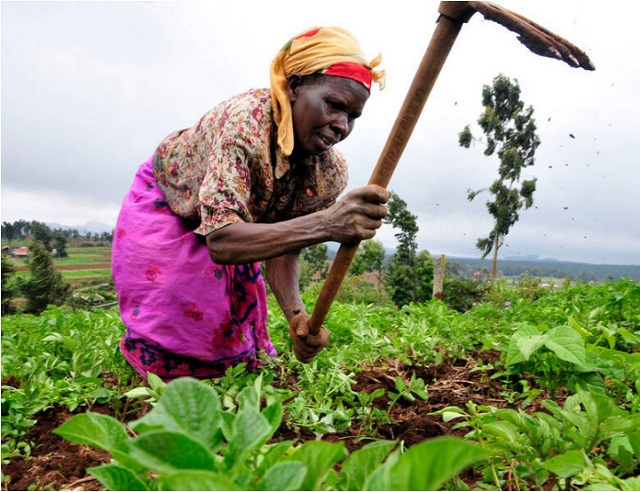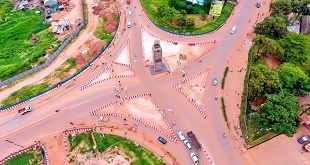
Uganda’s economic landscape presents several critical challenges that necessitate attention and intervention. Firstly, agriculture, which engages most of the labor force, requires substantial improvements in productivity.
COMMENT | BOB TWINOMUGISHA | As Uganda celebrates 61 years of independence under the theme ‘Sustaining a united and progressive nation, taking charge of our future as a free nation’, the country encounters noteworthy structural challenges. Nevertheless, it is leveraging its inherent strengths to foster economic growth and sustain prosperity.
Since gaining independence in 1962, Uganda has embarked on a dynamic economic journey characterized by low and high growth phases. The story of Uganda’s economic growth is told through the lens of statistics, and these numbers paint a vivid picture of the nation’s evolution.
In 1962, Uganda began its post-colonial journey with a GDP of a mere USD 449 million. The nation’s economic fortunes saw an upswing, reaching USD1.5 billion in 1972. Unfortunately, political instability caused a decline, lowering the GDP to USD1.2 billion by 1980. However, in the years following the war period, Uganda experienced a remarkable economic resurgence, with its GDP surging from USD3.9 billion in 1986 to an impressive USD45.5 billion in 2022, as confirmed by the World Bank.
This growth can be attributed to peace, an enabling economic environment, and several livelihood programs the government rolled out to promote socio-economic transformation.
Additionally, the recapitalization and revitalization of institutions like the Uganda Development Bank (UDB) and Uganda Development Corporation (UDC) have played a pivotal role in driving economic development. For example, when the COVID-19 pandemic hit in 2020, the Government implemented a raft of measures to support the resilience and a faster recovery of the country’s economy. As part of these measures, the government committed to capitalizing UDB with Shs1 trillion. Subsequently, the Bank has undergone remarkable growth. Currently, UDB disburses loans exceeding Shs700 billion annually to various qualifying projects across the country, with a particular emphasis on vital growth sectors such as primary agriculture, agro-processing, manufacturing, tourism, education, health, and infrastructure, among others.
This concerted effort from the government has led to a substantial decline in Uganda’s poverty rate, which dropped from 56.4% in 1992 to a commendable 20.3% in 2019. Uganda’s economy has shown remarkable resilience in the face of various economic shocks, including the lagged effects of the COVID-19 pandemic, global geopolitical tensions, and weather-related challenges. In the fiscal year 2022/23, Uganda’s GDP expanded to UGX184,288 billion from UGX162,883 billion in FY 2021/22, achieving an impressive growth rate of 5.3%. This growth is partially attributed to government initiatives to bolster private-sector activity and enhance regional trade.
Projections from the Bank of Uganda indicate that this growth momentum will continue, with an expected growth rate of 6% in FY2023/24 and within the range of 6% to 7% in the medium term. This improved economic performance outlook is largely attributed to the continued recovery in the services and industry sectors. Economic activity will be boosted by investments in extractive industries financed by Foreign Direct Investments (FDI) and higher export earnings.
As Uganda charts its path toward a brighter and more prosperous future, the imperative of enhancing productivity and fostering structural transformation becomes increasingly evident. To fully unleash its potential, Uganda must prioritize boosting productivity across diverse sectors while facilitating structural transformation. In the fiscal year 2022/23, the services sector contributed a significant 42.6% to GDP, overshadowing the industry and agriculture sectors, which contributed 26.1% and 24%, respectively, according to the latest statistics by the Ministry of Finance Planning and Economic Development. Specifically, the industrial contribution to GDP falls short of the 35% target set for countries aspiring to achieve upper-middle-income status (per capita income of USD 9,500) by 2040.
Consider the productivity of key strategic crops when compared to global averages. According to the latest data from the Food and Agriculture Organization (FAO), Uganda’s coffee yields just 0.54 tonnes per hectare, much lower than the world average of 0.88 tonnes per hectare, with Brazil achieving 1.63 tonnes per hectare. Similarly, Uganda’s maize production stands at 2.84 tonnes per hectare, significantly below Argentina’s 7.43 tonnes and the United States’ 11.1 tonnes per hectare
Uganda’s economy has exhibited growth, but it faces significant structural challenges that could undermine the sustainability of this development. Notably, a substantial portion of the country’s labor force, comprising more than 68 percent, is concentrated within the agriculture sector. To ensure sustained economic progress, there is a compelling necessity to shift this labor force and other resources away from sectors with lower productivity, such as primary agriculture, and redirect them towards higher-productivity domains like agro-processing and manufacturing. This strategic reallocation aims to transform the paradigm of agricultural production from subsistence to commercial, with the overarching goal of shifting 39 percent of Ugandans from a subsistence economy to a sustainable monetary economy.
Uganda’s economic landscape presents several critical challenges that necessitate attention and intervention. Firstly, agriculture, which engages most of the labor force, requires substantial improvements in productivity.
To illustrate, consider the productivity of key strategic crops when compared to global averages. According to the latest data from the Food and Agriculture Organization (FAO), Uganda’s coffee yields just 0.54 tonnes per hectare, much lower than the world average of 0.88 tonnes per hectare, with Brazil achieving 1.63 tonnes per hectare. Similarly, Uganda’s maize production stands at 2.84 tonnes per hectare, significantly below Argentina’s 7.43 tonnes and the United States’ 11.1 tonnes per hectare. These examples underscore the overall low productivity levels in Uganda’s agriculture sector compared to other global producers. To drive agricultural transformation and boost productivity, investment in modern farming techniques/mechanization, irrigation, fertilizers, and improved access to agricultural credit is imperative.
Secondly, a pivotal strategy for Uganda’s economic development lies in substantial investments in value addition through agro-processing and manufacturing. This approach can yield multiple benefits, including the creation of quality jobs, the enhancement of product quality for both local consumption and export, the bolstering of foreign exchange earnings to improve the balance of payments, and ultimately stimulating economic growth. Structural transformation will enhance Uganda’s global competitiveness, attracting foreign investment and expanding exports, further strengthening economic self-reliance.
Another significant structural challenge faced by Uganda is the prevalence of a large informal sector, which accounted for 53.4% of GDP (approximately Ugx 86.9 trillion) in the fiscal year 2021/22, according to the Uganda Bureau of Statistics. Uganda is the 2nd most Entrepreneurial Country in the world and yet 70% of these enterprises never make it to their 2nd year. Some of the challenges faced by SMEs today are bookkeeping, governance, sustainability planning, access to markets, access to credit, and financial literacy. The challenges above often correlate with low development outcomes.
To address these challenges, the Ugandan government is developing initiatives such as skill development through quality education and vocational training programs to enhance individual and overall economic productivity. Additionally, UDB also launched the Business Accelerator for Successful Entrepreneurship (BASE) with the goal of bridging the SMEs’ financing gap and promoting their sustainable growth.
The Program offers a series of training courses designed to impart valuable insights for enhancing business survival resilience and professionalism, guiding SMEs in understanding the importance of professional operations for optimal effectiveness and profitability.
Moreover, the Government is investing heavily in infrastructural development for sustainable business operations. The government is investing in transportation and energy infrastructure, such as roads, railways, and reliable power sources, to reduce production costs and facilitate market access. Notably, the 2023/24 national budget allocates UGX1,572 billion to the Sustainable Energy Development Programme’s electricity generation component, aimed at increasing electricity supply for domestic and industrial use. As of March 2023, Uganda’s installed generation capacity stood at 1,346 MW, according to the Ministry of Finance Planning and Economic Development.
Furthermore, embracing technological advancements and fostering innovation are vital for sustained productivity growth. Encouraging research and development, supporting startups, and promoting the adoption of digital technologies can result in efficiency gains across various industries.
However, it’s important to note that economic development often intersects with environmental challenges, potentially undermining sustainability efforts. Uganda has made significant progress toward achieving the Sustainable Development Goals (SDGs) both in the public and private arena. In line with this progress, the government has designated substantial amounts of money towards climate change. To bolster these sustainability initiatives, UDB launched the Climate Finance Facility (CFF), a strategic Fund aimed at providing affordable finance purposed to promote climate-smart agriculture and the development of climate-resilient infrastructure and low-carbon industries.
As we celebrate another year of independence, let us remember that true freedom encompasses not only political sovereignty but also economic independence. To achieve this vision, Uganda must unite and work together – the government, private sector, and civil society – to invest in key growth sectors such as agriculture, and manufacturing, as well as support hard and soft infrastructure such as roads, power, and technology. Through these collective efforts, Uganda can unlock its full potential and build a more inclusive and prosperous future for all its citizens.
******
 Bob Twinomugisha is a Senior Economist-Macroeconomics and Trade, with the Uganda Development Bank Ltd
Bob Twinomugisha is a Senior Economist-Macroeconomics and Trade, with the Uganda Development Bank Ltd
 The Independent Uganda: You get the Truth we Pay the Price
The Independent Uganda: You get the Truth we Pay the Price


